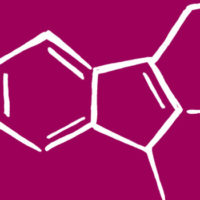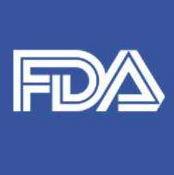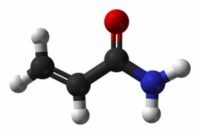In April 2002, Swedish scientists surprised the world by announcing the discovery of significant quantities of the chemical acrylamide in a variety of cooked foods.[1] Acrylamide is a known animal carcinogen and human neurotoxicant and the discovery of acrylamide in food prompted immediate reaction from governments worldwide, as well as intense media coverage.[2] In the U.S., nearly 200 articles on acrylamide in food appeared in daily newspapers through the rest of 2002.[3]
Acrylamide is an industrial chemical used in products for water purification, grouts, packaging, and scientific research. So what was this substance doing in food? Scientists soon discovered that acrylamide was forming in food as a result of a heat-induced reaction between two naturally occurring ingredients, the amino acid asparagine and reducing sugars.[4,5] In other words, acrylamide resulted from the cooking or thermal processing of foods.
The finding of acrylamide in food was followed shortly by the discovery by U.S. Food and Drug Administration (FDA) scientists that furan, another cooking-related chemical, occurred in larger amounts and in a larger variety of foods than had previously been reported. Acrylamide and furan in food have become significant issues for the FDA, with one or both compounds appearing on every FDA Center for Food Safety and Applied Nutrition (CFSAN) Program Priority list since 2003. What follows is a review of FDA’s work on acrylamide and furan, including a discussion of how FDA’s work fits into an international context.
Acrylamide
Acrylamide forms in food due to a reaction between the amino acid asparagine and reducing sugars such as glucose and fructose. The formation of acrylamide is part of the Maillard reaction, which leads to browning and flavor changes in cooked foods. Acrylamide formation occurs primarily at elevated cooking temperatures used when frying or baking (above 120C) and in low moisture conditions. There are also several foods in which acrylamide appears to form in high-moisture conditions at lower temperatures, such as prune juice and canned ripe black olives. FDA detected acrylamide in these foods during sampling of foods that are part of FDA’s Total Diet Study program.[6]
Acrylamide has been found primarily in plant-based foods, notably potato products such as French fries and potato chips; cereal foods such as cookies, crackers, breakfast cereals, and toasted bread; and coffee. FDA scientists estimate that the average U.S. consumer’s intake of acrylamide is 0.4 microgram/ kilogram body weight/day (µg/kg-bw/d), while international estimates for the average consumer ranged from 0.2 to 1.4 µg/kg-bw/d as of 2005.[7,2]
Acrylamide in food is a concern because it has been found to be carcinogenic in rodents and is therefore considered a potential carcinogen for humans. A major international evaluation of acrylamide by the Joint FAO/WHO Expert Committee on Food Additives (JECFA) in 2005 concluded that the levels of acrylamide in food were of concern, given the carcinogenicity rates seen in rodents.8 Acrylamide is also a known human neurotoxicant and animal reproductive and developmental toxicant. However, acrylamide is considered unlikely to have neurological, reproductive or developmental effects at the levels encountered in human foods, although more research is being carried out in these areas.[8,9]
Much research has focused on ways to mitigate formation of acrylamide in foods.[10-12] Proposed techniques generally fall into one of several areas: reducing the availability of free asparagine or reducing sugars, modifying other ingredients, and changing cooking time or temperature. Different techniques appear to be useful for different types of products: for potato products, selecting potatoes low in reducing sugar, controlling storage conditions, and reducing the time or temperature of cooking are frequently cited methods, while for cereal products, modifying the time or temperature of cooking, avoiding use of ammonium bicarbonate, and using materials low in asparagine may be more relevant. Other suggested techniques for acrylamide mitigation include the use of minor ingredients (e.g., amino acids, calcium, citric acid) that interfere with acrylamide formation, and the use of asparaginase to reduce asparagine levels prior to cooking. No good techniques have been identified for reducing acrylamide in coffee while preserving taste. Importantly, most proposed measures for reducing acrylamide are still commercially unproven. Additionally, manufacturers will need to know whether these measures affect the taste, stability and safety of a product.
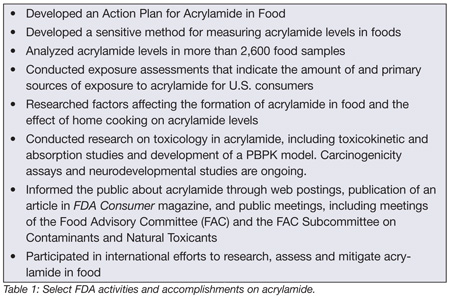 FDA Activities. After the discovery of acrylamide in food in 2002, FDA initiated a broad range of activities on acrylamide (Table 1). FDA accomplishments include development of an analytical method; analysis of acrylamide levels in food; exposure assessments; research on acrylamide toxicology, formation, and mitigation; and participation in international work on acrylamide.
FDA Activities. After the discovery of acrylamide in food in 2002, FDA initiated a broad range of activities on acrylamide (Table 1). FDA accomplishments include development of an analytical method; analysis of acrylamide levels in food; exposure assessments; research on acrylamide toxicology, formation, and mitigation; and participation in international work on acrylamide.
One notable aspect of FDA’s work is the development of a large database (more than 2,600 samples) of acrylamide levels in food, from analyzing both individually purchased food products and samples from the Total Diet Study. This database includes samples representative of food from food processors, restaurants, and home cooking, as well as foods from three cuisines common in the American diet: Asian, Hispanic and Southern/Creole/Cajun. FDA exposure estimates have remained stable over the past several years, even as more acrylamide results were added to the database. Therefore, as of summer 2006, no new sampling was planned, although more sampling can be added in the future if needed.
FDA is also pursuing important work on acrylamide in the area of acrylamide toxicology. Since 2002, FDA scientists at FDA’s National Center for Toxicological Research (NCTR) have published 11 papers on acrylamide toxicology in the areas of toxicokinetics, bioavailability, mutagenicity, and neurotoxicity. In 2008, NCTR is expected to complete new long-term rat and mouse carcinogenicity assays, which will address deficiencies in earlier carcinogenicity assays and provide more reliable data on potential carcinogenic risks of acrylamide exposure. NCTR has also completed development of a physiologically based pharmacokinetic (PBPK) model for acrylamide. The new potency data and PBPK model will be used along with food exposure data in a risk assessment intended to estimate the risk of cancer from acrylamide in food.
Currently, FDA is still in the information gathering stage on acrylamide, and has not instituted any regulatory action. FDA’s current dietary advice on acrylamide is unchanged since 2002, i.e., that consumers eat a balanced diet, choosing a variety of foods that are low in trans fat and saturated fat, and rich in high-fiber grains, fruits and vegetables. The planned risk assessment on acrylamide will be critically important to FDA’s risk management decision makers.
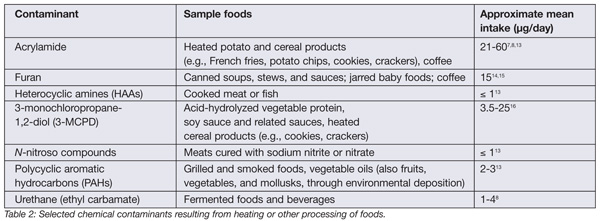 It should be noted that the presence of acrylamide in food presents some unique issues for risk management. Acrylamide is found in higher levels in food than a number of other contaminants that result from thermal processing (Table 2). Acrylamide is found in a wide range of foods, including dietary staples like potato and grain products; it forms through traditional cooking practices, both during food processing and at home; it forms from nutrients in food; and it is related to flavor-producing Maillard reactions. Such attributes make dealing with acrylamide a challenge for all regulatory agencies, including FDA.
It should be noted that the presence of acrylamide in food presents some unique issues for risk management. Acrylamide is found in higher levels in food than a number of other contaminants that result from thermal processing (Table 2). Acrylamide is found in a wide range of foods, including dietary staples like potato and grain products; it forms through traditional cooking practices, both during food processing and at home; it forms from nutrients in food; and it is related to flavor-producing Maillard reactions. Such attributes make dealing with acrylamide a challenge for all regulatory agencies, including FDA.
International Activity on Acrylamide. Substantial international work has gone into acrylamide research.[17] In the EU (European Union), the European Commission (EC) has established an Acrylamide Information Base to summarize EU research activities and held several workshops and meetings to share information on acrylamide risk and potential mitigation strategies. The EC’s Joint Research Centre runs a database on levels of acrylamide and coordinates work on analytical methods, such as proficiency studies and development of reference materials. The EC has also established the HEATOX program to investigate health risks from acrylamide and other chemicals formed in heat-treated foods.[18-19] Additionally, a European industry coalition, the Confederation of the Food and Drink Industries (CIAA) of the EU, has developed an Acrylamide Toolbox that contains extensive information from industry on techniques that may be useful to mitigate acrylamide levels in food.[11]
FDA has been actively involved in several international initiatives. Both WHO and JECFA have conducted preliminary evaluations of the risk from acrylamide in food, and FDA experts participated in these consultations. The Codex Alimentarius Commission, an international food standards-setting organization, is currently preparing a Code of Practice for the Reduction of Acrylamide in Food, and the U.S. (represented by FDA) is a co-lead in the working group for this project. The Joint Institute for Food Safety and Applied Nutrition, a consortium between the FDA and the University of Maryland, also organized several international workshops on acrylamide and coordinates the World Health Organization’s Acrylamide InfoNet.
Proposition 65 and Acrylamide. Proposition 65, or the Safe Drinking Water and Toxic Enforcement Act of 1986, is a state law that requires businesses in California to warn citizens of significant exposures to chemicals that can potentially cause cancer or reproductive harm. Businesses can either reformulate products to lower exposures below the level deemed significant by the state, or they can warn citizens of the exposures by labeling their products or posting a warning sign.
Both the California Attorney General and private interest groups have filed lawsuits against a number of U.S. food manufacturers and restaurant chains, alleging that food sold by these companies contains a known carcinogen (acrylamide) without warning, in violation of Proposition 65. If the lawsuits are successful, food manufacturers and restaurant chains may have to provide warnings that their foods contain acrylamide. FDA has stated publicly that it is concerned that warning language for acrylamide in foods could confuse consumers; e.g., by creating unnecessary public alarm about the safety of the food supply and by diluting overall messages about healthy eating.
A separate California agency, the Office of Environmental Health Hazard Assessment (OEHHA), is responsible for setting a risk level for acrylamide and suggesting appropriate warning language. In 2005, OEHHA proposed using nonstandard warning language for acrylamide that focused on the importance of a healthy diet and on cooking processes that can produce acrylamide, rather than identifying specific foods. OEHHA also proposed raising the level of acrylamide that would require warning language for breads and cereals, so as to avoid discouraging consumers from eating healthful cereal products. However, OEHHA was unable to finalize these proposals and withdrew them in April 2006.
According to Slayne and Lineback, in the U.S., Proposition 65 “has widely affected food industries and their willingness to release results of research on the amounts of acrylamide in their food products and on efforts concerning the lowering of amounts formed.”[17] As of the writing of this article, the U.S. food industry has not released a document comparable to the Acrylamide Toolbox produced by Europe’s CIAA.
Furan
Furan is an industrial chemical used in production of other chemicals, including tetrahydrofuran, resins, lacquers and agricultural products. Before 2004, the presence of furan due to heating had been reported in a limited number of foods. 20 In spring 2004, FDA scientists announced that they had found furan in a wide range of foods, particularly foods subjected to retorting in cans and jars. Furan was subsequently identified in certain low moisture foods as well, including crackers, potato chips, and tortilla chips. The levels detected by the FDA range from < 0.2 parts per billion (ppb) to over 170 ppb, and the FDA has estimated the average intake for U.S. consumers as 0.2 µg/kg-bw/d.[15]
The formation of furan is not as well understood as that of acrylamide. Multiple mechanisms have been proposed, including oxidation of polyunsaturated fatty acids, breakdown of ascorbic acid derivatives, breakdown of carbohydrates, and breakdown of amino acids in the presence or absence of reducing sugars.[21,22] Research into the mitigation of furan formation is limited, but the fact that furan appears to form by different mechanisms may complicate mitigation attempts.
Furan in food is a concern because it is listed in the Department of Health and Human Services Report on Carcinogens, based on animal tests, and because it is considered possibly carcinogenic to humans by the International Agency for Research on Cancer. A European Food Safety Authority review concluded that there is a relatively small difference between possible human exposures and doses that caused cancer in animals, although emphasizing that both toxicity and exposure data were limited and that more data were needed to draw conclusions.[23] FDA stated in 2004 that its preliminary estimate of consumer exposure was well below what FDA expects would cause harmful effects.
To date, the identification of furan in food has generated less attention and less research than acrylamide. However, it is possible that this situation may change as additional toxicity and exposure data become available on furan in the future.
FDA Activities. FDA’s furan related activities have followed a similar path to acrylamide (Table 3). The agency released the first set of furan data in May 2004, in conjunction with a request for information from the public on furan in food.[24] FDA then held a Food Advisory Committee (FAC) meeting in June 2004 to seek advice about what data are needed to assess fully the risk to consumers, if any, posed by furan. FDA has since developed an Action Plan for Furan in Food, expanded the furan data set to approximately 600 food samples, cooperated with the Alcohol and Tobacco Tax and Trade Bureau to gather data on furan levels in alcoholic beverages, and conducted exposure assessments on furan. Future plans call for limited additional testing of furan levels in food, conducting toxicology research at FDA’s National Center for Toxiological Research, including study of furan’s potential genotoxicity and mutagenicity, and development of a risk assessment for furan to characterize the potential risk that the presence of furan in food poses to the U.S. population. More about FDA activities on furan can be found at www.cfsan.fda.gov/~lrd/pestadd.html#furan.
As with acrylamide, FDA has not initiated any regulatory action on furan. FDA’s current dietary advice is the same as for acrylamide; that consumers eat a balanced diet, choosing a variety of foods that are low in trans fat and saturated fat, and rich in high-fiber grains, fruits, and vegetables.
International Activities. European activities on furan include a toxicological review on furan by the Scientific Panel on Contaminants in the Food Chain, development of a database on furan levels in food, including information provided by CIAA; development of a database on furan research projects throughout the EU; an EC sponsored meeting on analytical methods for furan detection; and work on furan as part of the HEATOX project.[23] Several other countries also have released data on furan levels in food, including Canada and Switzerland.
Conclusion
Acrylamide and furan are both potential human carcinogens that occur in food as a result of cooking or heat processing. Both compounds sprang onto the world stage as important food contaminants within the last several years, and research is ongoing in the areas of toxicology, exposure, formation, and mitigation. The full impact of these findings on food processors and regulators will not be clear until pivotal research is completed. With research on cooking-related contaminants continuing, it seems likely that more such compounds will be detected in the future.
With FDA for six years, Lauren Posnick Robin, Sc.D., is a review chemist in CFSAN’s Office of Food Safety.
Series Editor Sebastian Cianci is a public affairs specialist and a member of CFSAN’s Office of Food Defense, Communication and Emergency Response.
References
1. Tareke, E., et al. 2002. Analysis of acrylamide, a carcinogen formed in heated foodstuffs. J Agric Food Chem 50: 4998-5006.
2. Council for Agricultural Science and Technology. 2006. Acrylamide in food. Issue paper 32.
3. Joint Institute for Food Safety and Applied Nutri-tion Acrylamide in Food Workshop. 2004. Report of working group 5, risk communication. www.jifsan. umd.edu/presentations/acry2004/wg5_2004.pdf.
4. Mottram, D.S., et al. 2002. Acrylamide is formed in the Maillard reaction. Nature 419(6906): 448-449.
5. Stadler, R.H., et al. 2002. Acrylamide from Mai-llard reaction products. Nature 419(6906): 449-450.
6.U.S. FDA Total Diet Study Program. www.cfsan.fda.gov/~lrd/pestadd.html#tds.
7. U.S. FDA 2006. The 2006 exposure assessment for acrylamide. www.cfsan.fda.gov/~dms/acryexpo.html.
8. Joint FAO/WHO Expert Committee on Food Additives. 2005. Summary and conclusions: 64th meeting. www.who.int/ipcs/food/jecfa/ summaries/summary_report_64_final.pdf.
9. National Toxicology Program (NTP) Center for Evaluation of Risks to Human Reproduction (CERHR). 2005. NTP-CERHR monograph on the potential human reproductive and developmental effects of acrylamide. http://cerhr.niehs.nih.gov/ chemicals/acrylamide/Acrylamide_Monograph.pdf.
10. Codex Committee on Food Additives and Contaminants (CCFAC). 2006. Discussion paper on acrylamide and Annex I, Outline draft code of practice for the reduction of acrylamide in food. ftp://ftp.fao.org/codex/ccfac38/fa38_35e.pdf.
11. Confederation of Food and Drink Industries of the EU (CIAA). 2006. The CIAA acrylamide toolbox. www.ciaa.be/documents/brochures/
CIAA_Acrylamide_Toolbox_Oct2006.pdf.
12. Taeymans, D., et al. 2005. Acrylamide: update on selected research activities conducted by the European food and drink industry. J AOAC Intl 88(1): 234-241.
13. Jägerstad, M., and K. Skog. 2005. Genotoxicity of heat-processed foods. Mutat Res 574: 156-172.
14. DiNovi, M. 2006. Personal communication.
15. Rulis, A. 2005. Furans and FDA. Presentation at the 31st Annual Summer Toxicology Forum, Aspen, CO, July 10-14, 2005. www.toxforum.org/html/summer_meeting_2005.html.
16. European Commission (EC) Directorate-General Health and Consumer Protection. 2004. SCOOP report on chloropropanols in food. http://ec.europa.eu/food/food/chemicalsafety/contaminants/mcpd_data_tables_en.print.htm
17. Slayne, M.A., and D.R. Lineback. 2005. Acryla-mide: considerations for risk management. J AOAC Intl 88(1): 227-233.
18. European Commission (EC). 2006. Food contaminants—acrylamide. http://ec.europa.eu/food/food/ chemicalsafety/contaminants/acrylamide_en.htm.
19. The HEATOX Project. 2006. www.heatox.org.
20. Maga, J.A. 1979. Furans in foods. Crit Rev Food Sci Nutr 11(4): 355-400.
21. Becalski, A., and S. Seaman. 2004. Furan precursors in food: a model study and development of a simple headspace method for determination of furan. J AOAC Intl 88(1): 102-106.
22. Perez-Locas, C., and V.A. Yaylayan. 2004. Origin and mechanistic pathways of formation of the parent furan—a food toxicant. J Agric Food Chem 52(22): 6830-6.
23. European Food Safety Authority. 2004. Report of the Scientific Panel on Contaminants in the Food Chain on provisional findings of furan in food. The EFSA Journal 137: 1-20.
24. U.S. FDA. 2004. Furan in food, thermal treatment; request for data and information. 2004. Federal Register 69: 25911-25913.


